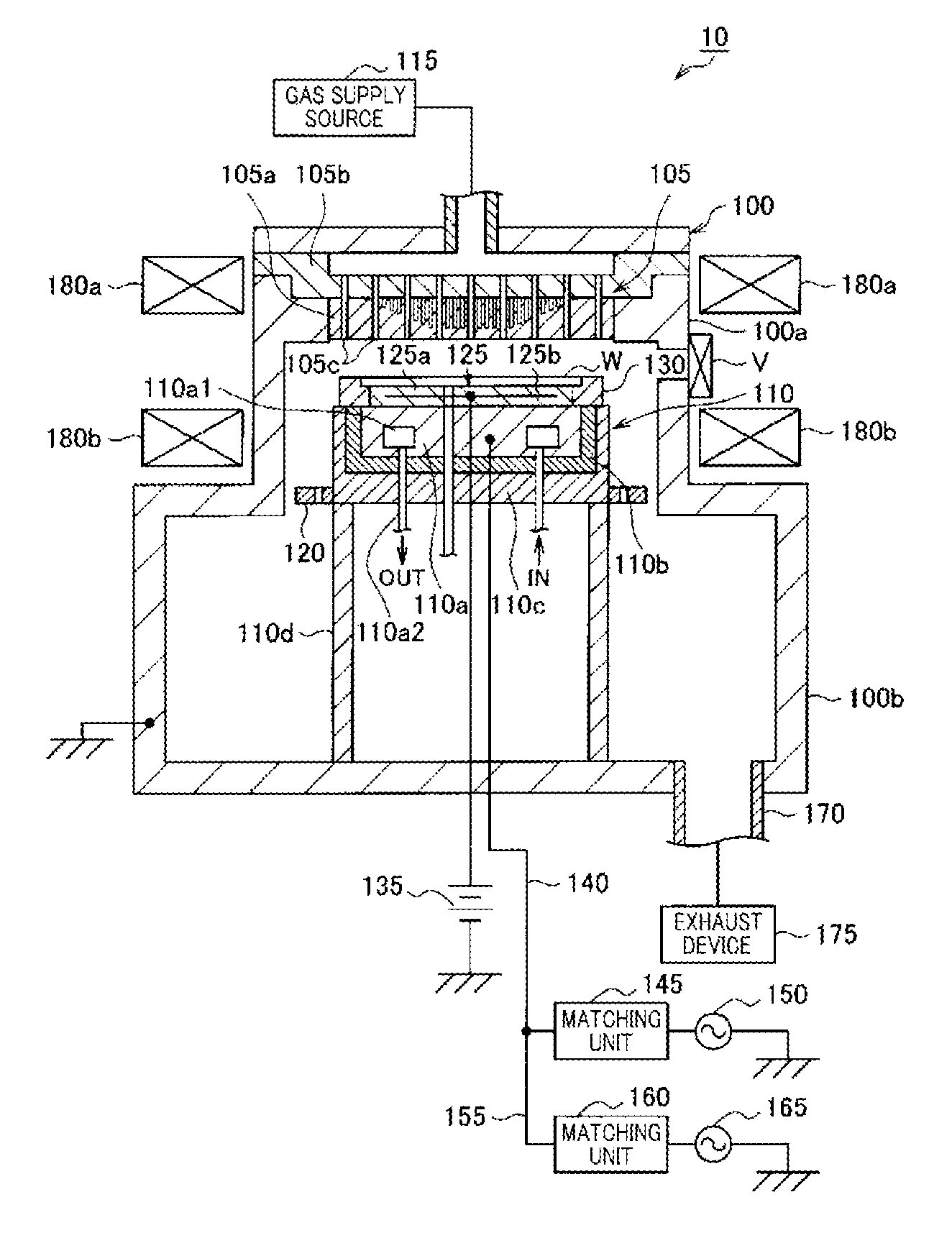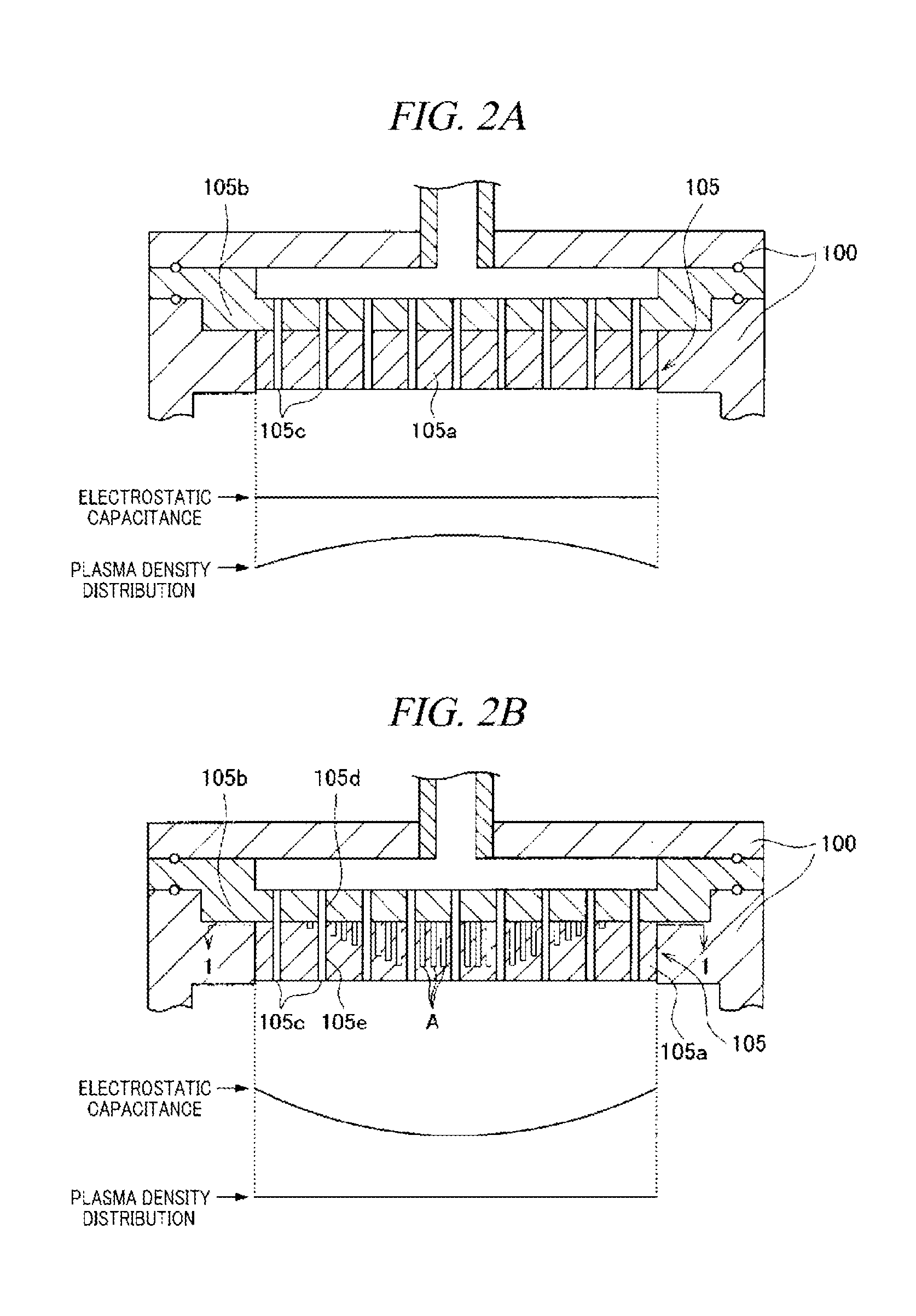Electrode and plasma processing apparatus
a plasma processing and electrode technology, applied in the direction of electric discharge tubes, coatings, chemical vapor deposition coatings, etc., can solve the problem that it is more difficult for a high frequency power to escape from the fine holes of the base than from other areas
- Summary
- Abstract
- Description
- Claims
- Application Information
AI Technical Summary
Benefits of technology
Problems solved by technology
Method used
Image
Examples
Embodiment Construction
[0035]Hereinafter, embodiments of the present disclosure will be described in detail with reference to the accompanying drawings. Through the present specification and drawings, parts having substantially same function and configuration will be assigned same reference numerals, and redundant description will be omitted.
[0036]An RIE plasma etching apparatus (parallel plate type plasma processing apparatus) using an electrode in accordance with an embodiment of the present disclosure will be explained with reference to FIG. 1. An RIE plasma etching apparatus 10 is an example of a plasma processing apparatus that introduces a processing gas into a depressurizable processing chamber, generates plasma by a high frequency power and performs a plasma process on a processing target object by the plasma.
[0037]The RIE plasma etching apparatus 10 may include a depressurizable processing chamber 100. The processing chamber 100 may include an upper chamber 100a of a small diameter and a lower ch...
PUM
| Property | Measurement | Unit |
|---|---|---|
| frequency | aaaaa | aaaaa |
| frequency | aaaaa | aaaaa |
| diameter | aaaaa | aaaaa |
Abstract
Description
Claims
Application Information
 Login to View More
Login to View More - R&D
- Intellectual Property
- Life Sciences
- Materials
- Tech Scout
- Unparalleled Data Quality
- Higher Quality Content
- 60% Fewer Hallucinations
Browse by: Latest US Patents, China's latest patents, Technical Efficacy Thesaurus, Application Domain, Technology Topic, Popular Technical Reports.
© 2025 PatSnap. All rights reserved.Legal|Privacy policy|Modern Slavery Act Transparency Statement|Sitemap|About US| Contact US: help@patsnap.com



